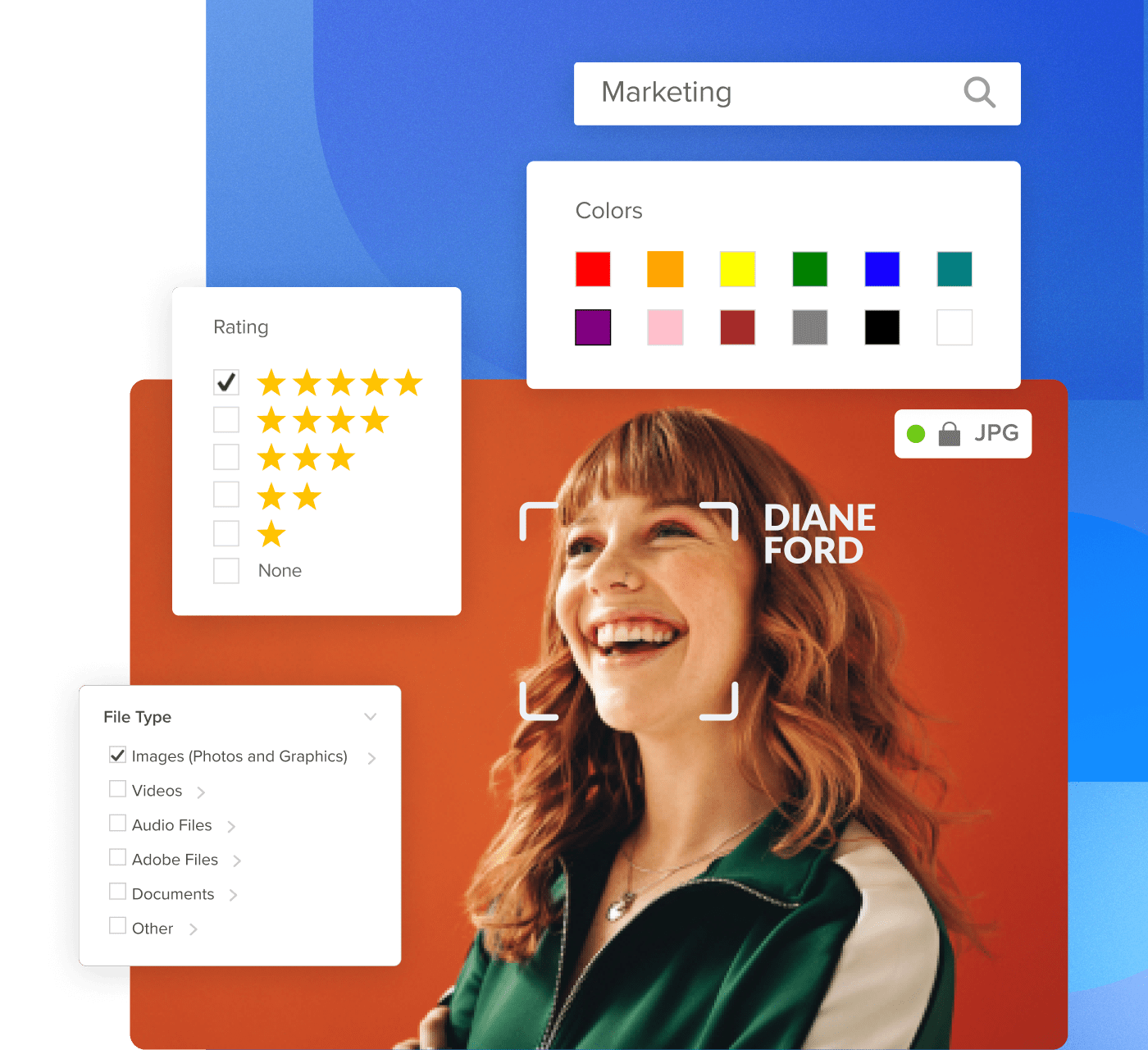For most digital asset management projects, success is determined by this simple question: Can your users find what they need? If the search experience is poor and users are not finding results in the first few attempts, no matter how great and complex the solution is, there will be issues with user adoption and implementation success will be jeopardized. Keep in mind that search goals are not always as simple as finding the latest logo or a specific brochure by name. Search results are meant to solve unique inquiries related to the user’s roles and make their workflow and processes more efficient.
When evaluating the search capabilities of different DAM platforms, it’s important to prepare several potential queries that correlate with the needs of your team. Your users need to be able to do more than just search for a single word and be able to intelligently narrow down their results in order to find what they are looking for within a reasonable timeframe. Some things they may want to consider in their search:
- How old is the asset – less than 7 days? The last month? Last Year?
- Who uploaded it?
- Is it flagged as final, approved or has another data point?
- Does the image have people in it?
- What’s the dominant color?
- Do you want to look at a specific area of the library?
By having the ability to include these types of search criteria, your users are able to improve their search and find what they need fast.
Let’s look at a few sample scenarios:
1. Client Deliverables- Specific Clients
A creative agency account manager needs to monitor and track the final projects delivered to one of their clients, Spa Express, to ensure accurate billing and reporting. Here are examples of what they would want to track: How many assets were uploaded for a specific client in a given month? How many videos and high-resolution photos were created this month against a set quota?
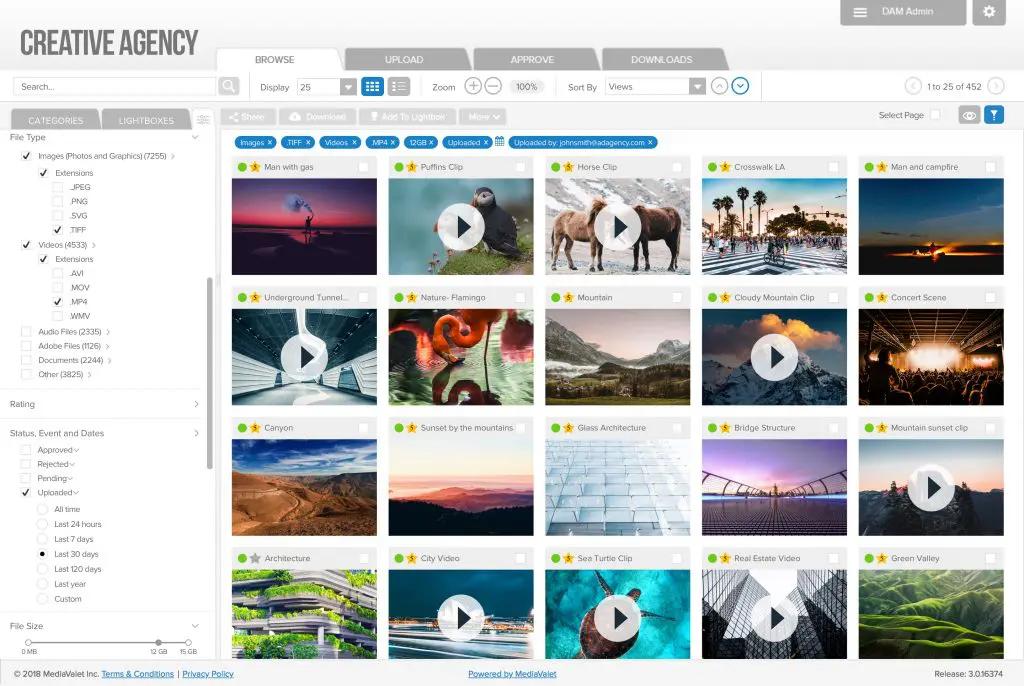
Search Criteria:
Client: Spa Express
File Type: TIFF, MP4
Delivered to Client: True
Status, Event, and Dates: Uploaded in Last 30 Days
2. Finding B-Roll – Specific Asset Types
A Hotel’s marketing coordinator is putting together some social videos for their location in Honolulu. They are looking for “B-roll” content from that specific location to build their videos. “B-roll” is set up as a custom tag that can be used to filter results.
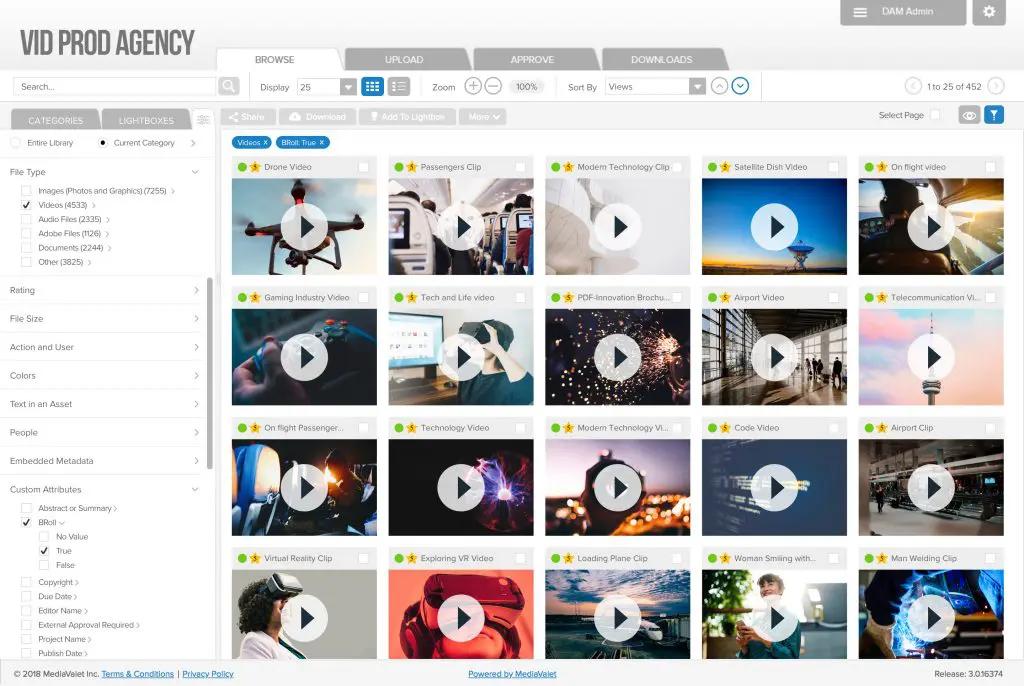
Search Criteria:
File Type: Videos
B-Roll: True
Location: Honolulu
3. Photography Management – Specific Uploaders
A brand that works with multiple agencies is looking for an asset. Their creative designer doesn’t remember the specifics of that asset but knows that it was uploaded by a specific agency or its photographer and would have approved status.
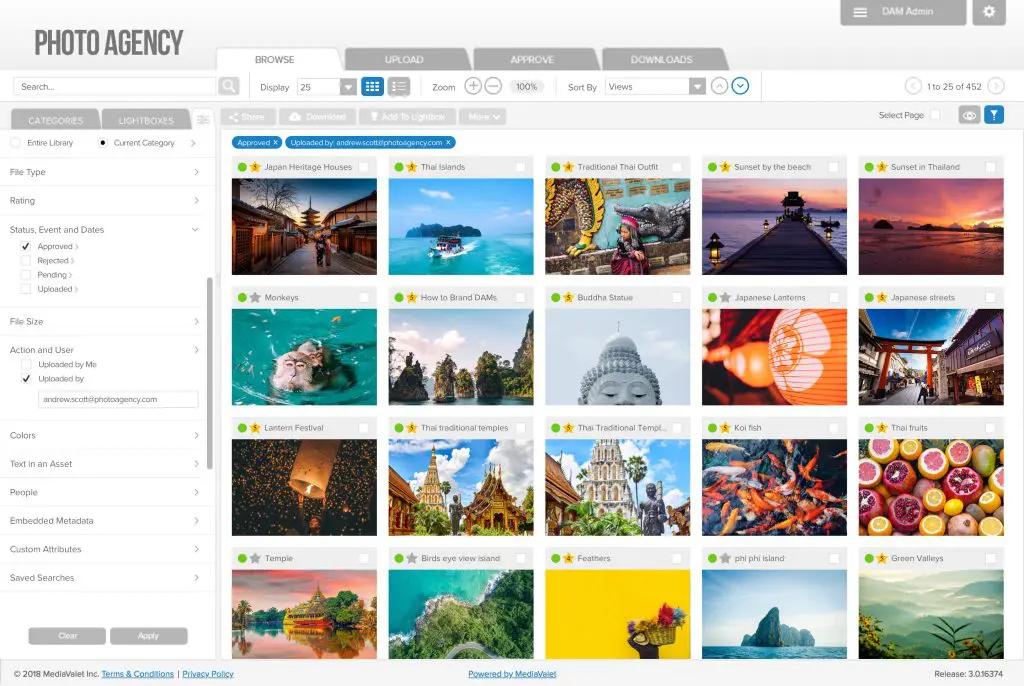
Search Criteria:
Status, Event, and Dates: Approved
Action and User: Uploaded by [email protected]
4. Product Discovery – Specific Products
A furniture manufacturer frequently has to search for images that do not contain people. Searching manually through almost a million assets is not an option. Yet it’s an attribute that’s hard to capture manually. Leveraging cognitive services-powered search can help scan through those assets in a fraction of a second.
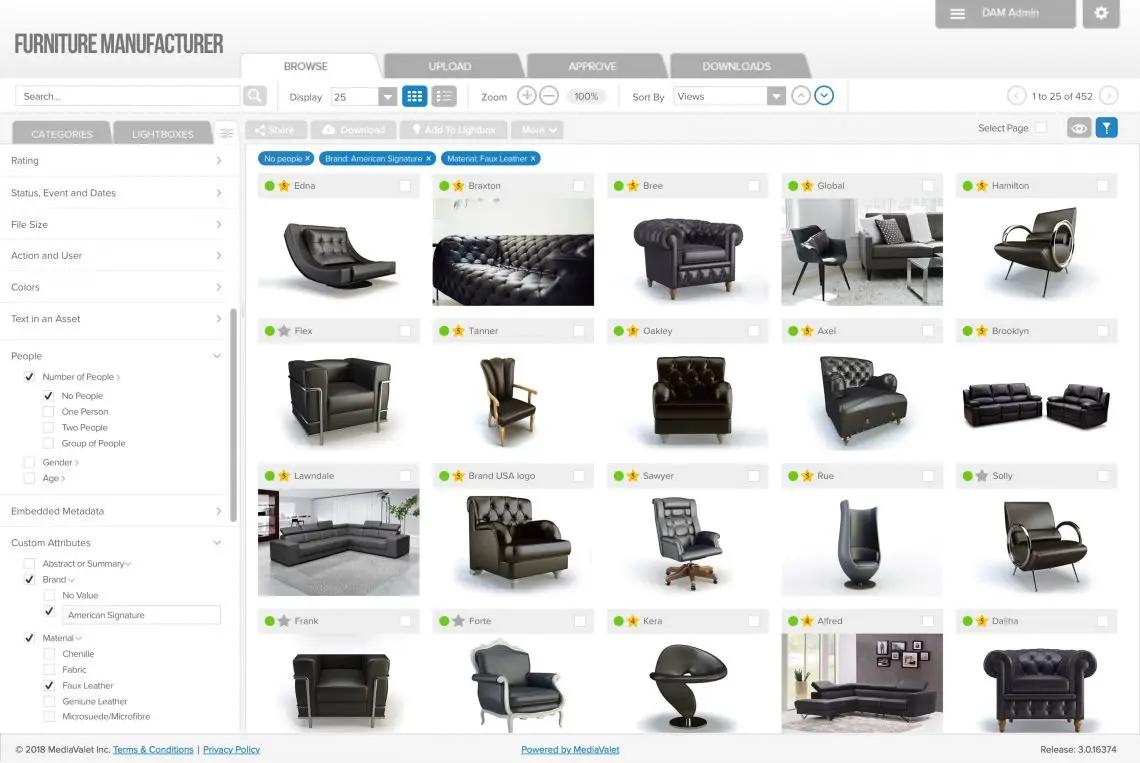
Search Criteria:
SKU: 12345, 6474511
Brand: American Signature
Material: Leather, Faux
5. Color Themes – Specific Colors
A home décor retailer runs frequent campaigns that are based on color themes. They need to easily find images with dominant colors in a specific tone. With Advanced Search, cognitive services would only show images that match the specific color tone.

Search Criteria:
Color: Yellow
Category: Couches/ Sofas
Category: Table, Storage
Just like Google’s original mission was “to organize the world’s information and make it universally accessible and useful”, at its simplest form, the purpose of a DAM initiative is to organize a company’s digital assets and related information to make them accessible and useful, whenever they’re needed.
When done properly, a DAM initiative can provide unrestricted access to resources and empower employees to achieve more.
Learn more about MediaValet’s Advanced Search and Cognitive Services capabilities!
Related Articles
Ready to see what the DAM hype’s about?
Meet with one of our product experts
